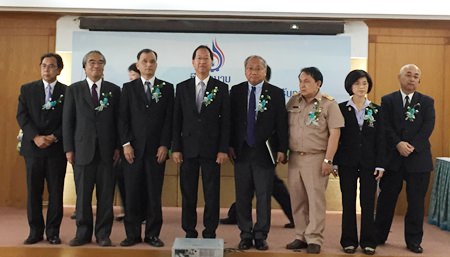BANGKOK, 27 April 2015 – Many might not know that whenever we turn on the air conditioner we are contributing to damage of the ozone layer, allowing more Ultraviolet light to cause skin cancer, while also contributing to global warming.
In a process to reduce global warming and stop refrigerant from destroying the ozone layer, the Department of Industrial Works (DIW) urges the producers of air conditioners in Thailand to shift to the use of the refrigerant HFC-32 or R-32 instead of the current hydrochlorofluorocarbons (HCFC or R-22).

Dr. Pasu Loharjun, DIW Director said that the new refrigerant available for use by all air conditioning companies in the near future, will help to reduce the impact of air conditioning units on the environment by 2.68 times. The traditional R-22 refrigerant has an Ozone Depletion Potential (ODP) rate of 0.05 while having a Global-Warming Potential (GWP) rate of 1,810. The new R-32 refrigerant however does not damage the ozone layer (ODP = 0) while having a lower GWP rate of 675.
Despite the higher cost of new equipment, the higher cost of buying the new liquid, and having to redesign the unit to work well with the new refrigerant, the department will be helping air conditioner producers through funding and technology sharing, involving support by both Japanese companies and the Japanese government.
Dr. Pasu emphasized that the new refrigerant, despite having a 10% higher purchasing cost, is more efficient, meaning less refrigerant liquid is required to generate cold air from the unit, resulting in an air conditioner smaller by 30-40% while having about the same capacity as before to cool down a domestic living room.




